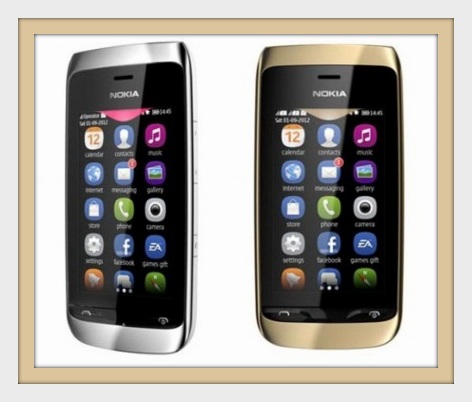Retail Security Trends 2017
If statistics are anything to go by, this year alone more than US$123 billion worth of sales will be wiped from the retail landscape globally. It will walk out the door, disappear into employee’s pockets or simply vanish from the supply chain as part of the age-old phenomenon that is retail shrink.
But just as thieves are becoming increasingly savvy in the art of the big steal, so too are the retailers and security innovators looking to catch them in the act. Emerging technology will see retailers armed with better data, better tools and better surveillance than ever before as they wage the never-ending battle against retail loss.
Image Source : cuinsight.com
Here are the top security trends of 2017 set to claw back territory in the war against shrink.
Facial recognition and CCTV
CCTV and its watchful eye in the sky may have been around since mid last century, but a lot has changed in the past 70 years. According to experts, the big ticket evolutions for this year include the adoption of facial recognition software along with networking ability and mobile access to available data.
Last year The Guardian noted an estimated 59% of UK retailers alone used facial recognition software as part of their CCTV.
“In its commercial retail application, faces of individuals caught on camera are converted into a biometric template and cross-referenced with a database for a possible match with past shoplifters or known criminals. Some stores in the US give shoplifting suspects the option of allowing themselves to be photographed, rather than arrested. All this had been made possible by the arrival of networked, high-resolution security cameras and rapidly advancing analytical capabilities.”
Images can now be captured, stored as data on or offsite and accessed remotely even via mobile device. A new feature emerging from this, according to America’s National Retail Federation Vice President of Loss Prevention Bob Moraca is that as surveillance practices become more sophisticated, storable and accessible, they are being increasingly shared between entities.
Effectively that means a retailer within a mall may be targeted for theft, the images are caught on that store’s camera, then security within the mall and further CCTV on the street, making the tracking of thieves easier.
But it’s not just loss prevention reaping the rewards. The Guardian continues surveillance is often doing “double duty to help stores improve sales”. Many of the companies providing facial recognition capabilities “also offer sophisticated analytics applications that capture your in-store “dwell times”, responses to product displays and traffic flow”.
Electronic article surveillance (EAS) and RFID
Used by 73% of retailers according to the Global Retail Theft Barometer 2015, EAS is a loss prevention staple with over one million EAS systems installed globally.
At its simplest, EAS utilises three essential components – tags or labels adhered to merchandise, an antenna/pedestal system which sounds an alarm when activated tags meet certain criteria, and a deactivation device like a magnet to remove or disarm tags or labels on purchased items at the point of sale.
While this year will see EAS manufacturers continue to find more creative means to ensure their deactivation devices cannot be replicated or blocked, the future of EAS is arguably RFID. And according to experts 2017 is the year this technology will take off.
Bloomberg notes: “While only 4 percent of big U.S. apparel retailers had RFID tags on all their clothes as of last June, according to a study by the Auburn University RFID Lab, the other 96 percent are all in some stage of deployment.”
Meanwhile an IDTechEx report found that in 2015, the total RFID market was worth $10.1 billion, but was expected to rise to $13.2 billion in 2020.
The major loss prevention benefits for RFID are that, when applied as source tagging at the point of manufacture, they can combat fraud and theft throughout the entire supply chain, while also eliminating administrative errors.
Meanwhile, RFID is also being employed to save time in inventory management and improve the consumer experience. Figures indicated in Forbes notes RFID increases inventory accuracy from an average of 65% to more than 95%, and now the technology is becoming smaller and more agile.
This year a U.K.-based company, Advanced E-Textiles, is launching thread-sized microelectronic RFID tags, Forbes states. The tag—basically a washable, wound-up electronic barcode in thread form that can be read by radio waves—would be sewn into the garment by the manufacturer
RFID allows the retailer to not only know what they have on hand at any given moment in real time, but can also automatically alert management when stock runs low, and can even re-order independently when necessary.
Security and increased stock accuracy may be driving the trend, but it’s the emerging potential of RFID to hone a customer’s in-store experience that is providing the most exciting and innovative results.
The technology allows for increased speed at the checkout with quick scanning or self service, and works to minimise customer walkouts by ensuring the item they seek is available.
Meanwhile, it’s also being applied beyond the shop floor through interactive change rooms which tell a customer whether an item in a different colour is in stock or via virtual reality and smart mirrors to show a customer what they could look like wearing a different shade or similar style.
Big data
Combined, these technologies are set to yield vast data for the companies riding the retail security wave. They will tell retailers when a store is busy, where stock is at any given time, the items most likely to be targeted for theft and by whom at what time.
Robots.net has stated that by the near future Big Data Solutions will help businesses in today’s data-driven economy.
Also feeding into the big data and security game is pedestal analytics. An essential element of EAS, pedestal antennae will this year continue to offer further data and tools including traffic counting, booster bag detectors and jamming notification.
But while this information is critical to better store design, better loss prevention and better staff training, it’s not an end in itself. Experts note the real key to future security is in utilising combined strategies to thwart the would-be thief on multiple levels.
Importantly data will arm the retailer with the best knowledge of where to most efficiently apply their varied traditional strategies at what time.
And that will continue to be a combination of the following techniques identified by the Global Retail Theft Barometer:
- Electronic article surveillance (used by 73% of retailers in 2015)
- Spider wraps and security keepers (used by 44% of retailers in 2015)
- Advanced inventory security control tactics i.e secure cables (used by 27% of retailers in 2015)
- Shelving solutions and delayed fixtures were used by 27% of retailers
- RFID based EAS (used by 15% of retailers but rising rapidly)
- EAS pedestal analytic data tools (used by 11 % of retailers in 2015)
Big data will help better hone and implement these practices for maximum effect.
The final word
No matter what innovations an individual technology may yield, the future will remain in implementing multiple strategies to target shrinkage at any level. 2017 may provide more information about product location and better data to combat its theft but the real result will see retailers armed with the ability to better utilise traditional resources to reduce shrink even further.
In short information will be the prominent technology to fight crime in an increasingly technological world.


